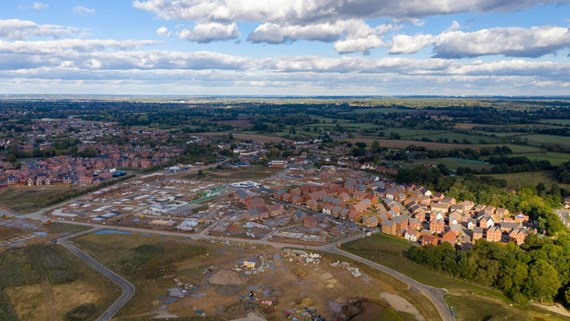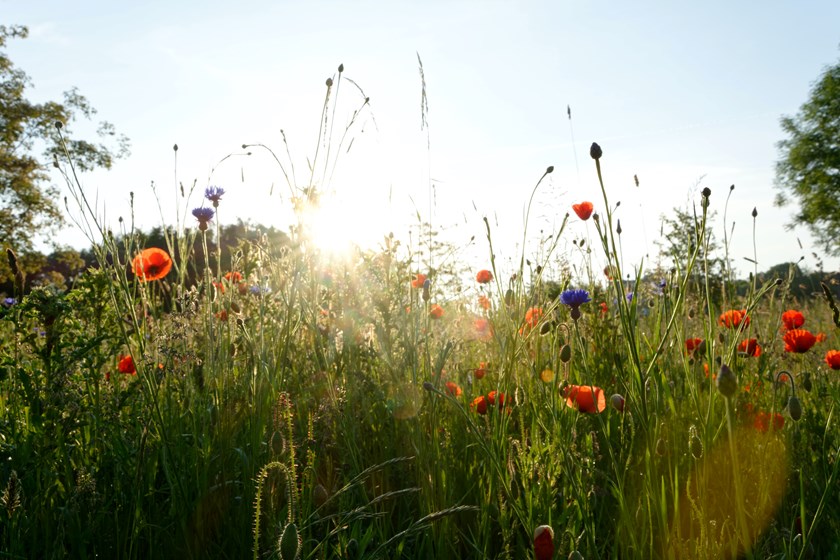Very special circumstances: building on the Green Belt
Insight

The Green Belt is a planning term for the belt of open space (not necessarily green) surrounding many of our cities and towns. We can trace its birth to the Ministry of Housing and Local Government Circular 42/55: Green Belts, which followed a statement by the Rt Hon. Duncan Sandys MP Minister of Housing and Local Government in the House of Commons on 26 April 1955:
“I am convinced that, for the well-being of our people and for the preservation of the countryside, we have a clear duty to do all we can to prevent the further unrestricted sprawl of the great cities…I am accordingly asking all planning authorities concerned to give this matter further consideration, with a view to submitting to me proposals for the
creation of clearly defined Green Belts."
The Green Belt is not a legal construct; it is entirely based on planning policy and policy documents. Whilst case law has given us guidance in relation to what can and cannot be done in the Green Belt there is no ‘statutory law of the Green Belt’.
Circular 42/55 from 3 August 1955 set out the original Green Belt policy:
"Inside a Green Belt, approval should not be given, except in very special circumstances for the construction of new buildings or for the change of use of existing buildings for purposes other than agriculture, sport, cemeteries, institutions standing in extensive grounds, and other uses appropriate to a rural area."
The Green Belt today
Jumping forward to the present day and the successor to Circular 42/55, The National Planning Policy Framework (19 February 2019) (NPPF), we find the Green Belt still entrenched in policy and on a similar basis:
"The Government attaches great importance to Green Belts. The fundamental aim of Green Belt policy is to prevent urban sprawl by keeping land permanently open; the essential characteristics of Green Belts are their openness and their permanence (Paragraph 133 NPPF)."
Pushing back the Green Belt is actually quite difficult. Paragraph 136 of the NPPF is clear that:
"Green Belt boundaries should only be altered where exceptional circumstances are fully evidenced and justified, through the preparation or updating of plans."
The strength of this policy is evidenced by statistics published by the Ministry of Housing Communities & Local Government:
"Overall there was a decrease of only 5,070 hectares (0.3%) in the area of Green Belt between 31 March 2017 and 31 March 2018."
And yet some voices are calling for change; they argue that the Green Belt is not something to celebrate. Instead, they see it as a socially pernicious policy which inflates house prices, increases the cost of living and forces development to intensify within existing settlements (pushing people into ever smaller flats). For those who hold this view the context of a ‘housing crisis’ could create momentum for reform; some cabinet
ministers have even called for one million new homes to be built on the Green Belt.
Are all forms of development prohibited in the Green Belt?
No, every planning application is determined on its own merits against the Development Plan which the NPPF sits atop. Appropriate forms of development which have policy support in the Green Belt are set out in Paragraph 145 of the NPPF as being:
- buildings for agriculture and forestry;
- the provision of appropriate facilities (in connection with the existing use of land or a change of use) for outdoor sport, outdoor recreation, cemeteries and burial grounds and allotments; as long as the facilities preserve the openness of the Green Belt and do not conflict with the purposes of including land within it;
- extension or alteration of a building provided that it does not result in disproportionate additions over and above the size of the original building;
- replacement of a building, provided the new building is in the same use and not materially larger;
- limited infilling in villages; and
- limited affordable housing.
Additionally, Paragraph 146 of the NPPF confirms that certain other forms of development, so long as they preserve the Green Belt’s openness and do not conflict with its purposes, are not inappropriate:
- mineral extraction;
- engineering operations;
- local transport infrastructure (which requires a Green Belt location),
- re-use of permanent buildings;
- material changes in land use (to uses for outdoor pursuits, cemeteries and burial grounds); and
- development brought forward under a Community Right to Build Order or Neighbourhood Development Order.
A Community Right to Build Order can be created by a community organisation to grant planning permission for small scale development for community benefit on a specific site or sites within a neighbourhood. The Government’s Planning Practice Guidance indicates that such development can include the building of homes, shops, businesses, affordable housing and facilities for the community.
Neighbourhood Development Orders can also grant planning permission for specific types of development in neighbourhood areas such as:
- building operations (eg structural alterations, construction, demolition or other works carried out by a builder);
- material changes of use of land and buildings; and
- engineering operations.
Other forms of development, not listed above, would be considered inappropriate development in the Green Belt.
How can inappropriate development get planning permission in the
Green Belt?
Where the potential harm is “clearly outweighed by other considerations” this can justify inappropriate development in the Green Belt (Para 144 NPPF) and represent “very special circumstances”. There is no definite list for what will constitute very special circumstances, but the threshold can be high and will turn on the facts and circumstances of the individual application.
That is not to say those wanting to carry out inappropriate development in an existing area of Green Belt should abandon hope. Where other considerations cumulatively outweigh the harm to the Green Belt this can qualify as very special circumstances. For example, different elements of the following have in real cases cumulatively qualified as creating very special circumstances:
- an overall shortfall in housing supply for a particular area;
- local need for residential accommodation of particular types or tenures;
- current and emerging Plans do not make adequate provision for particular types and tenures;
- the development would enable some form of infrastructure needed by a community;
- the proposals make a significant contribution to unmet need;
- the housing proposed meets a specialist need which might release other already constructed housing; and
- emerging Local Plans may include proposals to alter the Green Belt and allocate your site for development.
There may be some factors which alone outweigh the harm to the Green Belt and no accumulation of other facts is needed, but that would be a matter of fact and circumstance for each application. In short, whilst the Green Belt is a barrier to development it is possible to develop within it and we do see examples of housing of different types and tenures leap over that barrier.
If you require further information about anything covered in this briefing, please contact your usual contact at the firm on +44 (0)20 3375 7000.
This publication is a general summary of the law. It should not replace legal advice tailored to your specific circumstances.
© Farrer & Co LLP, July 2019







